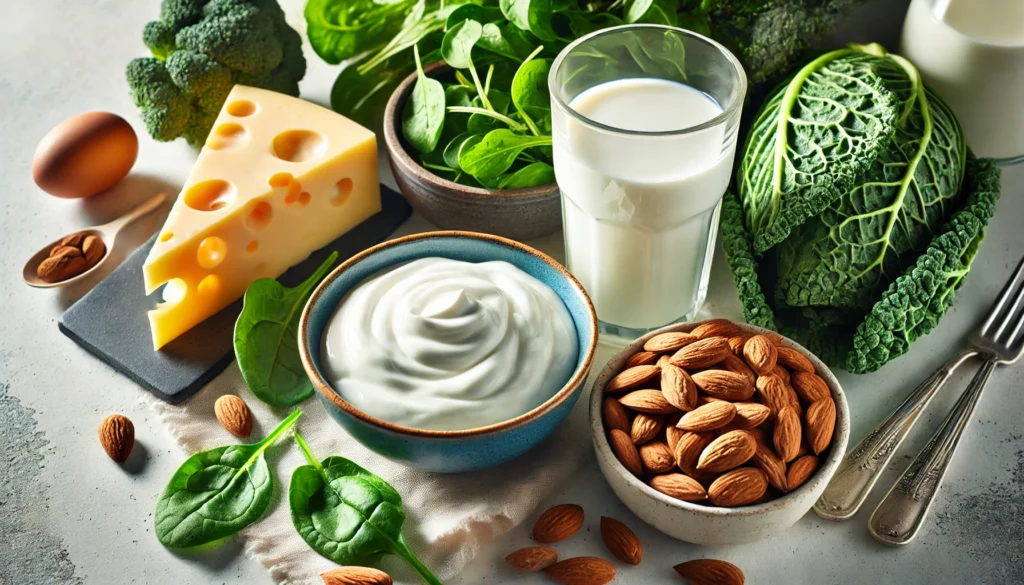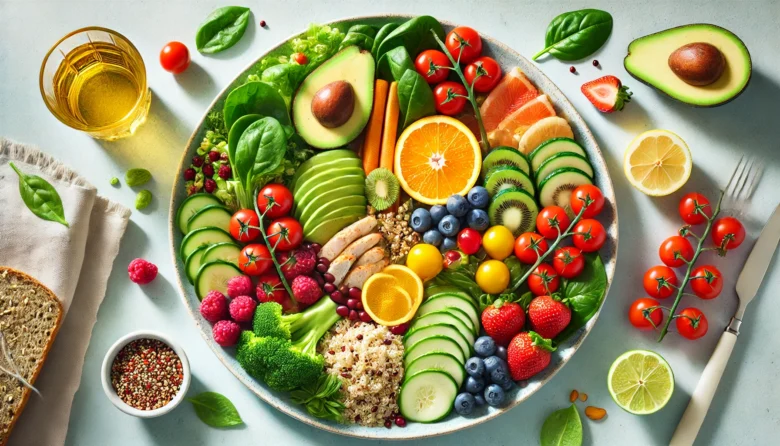Fun Fact: Did you know that the human body needs 13 essential vitamins, but it can only produce one of them—vitamin D—on its own through exposure to sunlight?
Nutrition is a fascinating science that affects every part of our daily lives, from the energy we feel in the morning to the way our skin glows. The chemistry behind how vitamins and minerals work within our bodies is often overlooked, but these micronutrients are essential for good health. In this blog, we’ll explore the chemistry of vitamins and minerals in nutrition, how they interact with our bodies, and why they are so crucial for maintaining a healthy lifestyle.
What Are Vitamins and Minerals?
Vitamins are organic compounds that our bodies need in small amounts for a variety of functions, such as maintaining immune health, promoting cell growth, and supporting metabolic processes. Minerals, on the other hand, are inorganic elements like calcium (Ca) and iron (Fe) that help with bone structure, oxygen transport, and other critical functions.
How Do They Work?
The chemistry of vitamins revolves around their ability to act as coenzymes or precursors to coenzymes, meaning they assist enzymes in catalyzing (speeding up) essential biochemical reactions. For example, vitamin C (ascorbic acid) plays a role in the synthesis of collagen, an important protein in skin and connective tissue.
Minerals often work by forming ions—charged particles—that participate in a range of reactions. Sodium (Na) and potassium (K) act as crucial electrolytes that maintain fluid balance in the body while also supporting nerve signalling. Calcium, an essential mineral, is crucial for muscle contraction and bone health.

The Role of Vitamins in the Body
There are two types of vitamins based on how they dissolve and are stored in the body:
Water-soluble vitamins
These include vitamin C and the B vitamins, such as B12 (cobalamin) and B9 (folate). Water-soluble vitamins dissolve in water, which means they are not stored in large amounts in the body and need to be consumed regularly.
Vitamin B12: This vitamin, commonly found in meat and dairy, is vital for DNA production and proper neurological function. A deficiency may result in conditions such as anaemia or nervous system issues.
Vitamin C: Known for boosting immune health, vitamin C also aids in iron absorption and protects cells from damage as a powerful antioxidant.
Fat-Soluble Vitamins
These vitamins include A, D, E, and K, and they dissolve in fat and can be stored in the liver and fatty tissues.
Vitamin A: Vitamin A is vital for vision and immune function, and it can be found in foods like carrots and leafy greens.
Vitamin D: Vitamin D, also known as the “sunshine vitamin,” plays an essential role in helping the body absorb calcium, which is key for maintaining strong bones and overall skeletal health.
The Role of Minerals in the Body
Minerals are categorized into macrominerals (needed in larger amounts) and trace minerals (needed in smaller amounts).
Macrominerals:
Calcium: As the most abundant mineral in the body, calcium supports bone and teeth health, muscle function, and even heart rhythms.
Magnesium (Mg): Magnesium is involved in over 300 enzymatic reactions, including protein synthesis and muscle function.
Trace Minerals:
Iron: Essential for the production of haemoglobin, the protein in red blood cells that carries oxygen. A lack of iron leads to anaemia, causing fatigue and weakness.
Zinc (Zn): This trace mineral supports immune function and wound healing.
Real-Life Example: The Impact of Vitamin Deficiency
Let’s consider scurvy, a disease caused by a lack of vitamin C. In the 18th century, sailors who lacked access to fresh fruits and vegetables would develop this condition. Symptoms included bleeding gums, fatigue, and slow wound healing. The discovery of the link between citrus fruits and scurvy prevention was one of the first recognitions of the importance of vitamins in human health.
The Interplay Between Vitamins and Minerals
Vitamins and minerals often work in tandem to perform certain functions. For example, vitamin D enhances the absorption of calcium in the intestines, making it critical for maintaining strong bones. Similarly, vitamin C improves iron absorption from plant-based foods, helping to prevent iron deficiency anaemia in vegetarians and vegans.
Can You Get Too Many Vitamins and Minerals?
While a balanced diet provides the necessary vitamins and minerals, there is such a thing as too much of a good thing. For example, excessive vitamin A intake can lead to hypervitaminosis A, causing symptoms such as liver damage and vision problems. Similarly, too much calcium can lead to kidney stones. This is why it’s important to consult with healthcare providers before taking high-dose supplements.
Conclusion
Vitamins and minerals are the unsung heroes of our diet. Their chemistry helps keep our bodies functioning optimally, from generating energy to repairing cells and fighting off infections. By understanding how these nutrients work, we can make better choices about what we eat and how we support our overall health.
Call to Action
Next time you reach for a snack, think about how the chemistry of vitamins and minerals in nutrition can shape your well-being. Whether it’s grabbing an orange for vitamin C or a glass of milk for calcium, these small choices add up. So, why not start today by adding more nutrient-rich foods to your diet?
Author’s Note
As someone passionate about nutrition and health, I find it fascinating how the chemistry of everyday vitamins and minerals plays such a vital role in our lives. I hope this blog inspires you to think more about the nutrients fueling your body and make conscious choices to stay healthy.
G.C., Ecosociosphere contributor.
References and Further Reading
- Harvard T.H. Chan School of Public Health – Vitamins and Minerals
- National Institutes of Health (NIH) – Vitamins and Minerals
- Biology Ease – Learn Biology with Ease. https://biologyease.com/
- How Do Other Mineral Supplements Work? Drug Class, Uses, Side Effects, Drug Names. https://www.rxlist.com/how_do_other_mineral_supplements_work/drug-class.htm
- Vitamin D – Elaine Moran Wellness. https://www.elainemoranwellness.com/food-as-medicine-database/search-by-nutrient/vitamin-d/
- Micronutrients Explained: The Essential Vitamins and Minerals for Optimal Health – FitPillars. https://fitpillars.com/micronutrients-explained-the-essential-vitamins-and-minerals-for-optimal-health/
- How Much Metal Is In The Human Body? The Analysis. https://beinghuman.org/how-much-metal-is-in-the-human-body/
- (2023). United States : FDA Approves First Oral Treatment for Anemia Caused by Chronic Kidney Disease for Adults on Dialysis. MENA Report, (), .
- How Much Sea Moss Should You Safely Consume Daily – Plant Based Jeff. https://plantbasedjeff.com/blogs/news/sea-moss-safely-consume-daily
- Blocks of Health Archives – health tips atoz. https://healthtipsatoz.com/tag/blocks-of-health/




